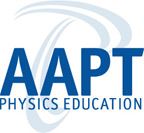- Home
- What We Do
- Laboratory Immersions
- Immersions 2018
- Imm2018Chicago_PET
Positron Emission Tomography
University of Chicago, July 13-15, 2018
(One set-up available)
This experiment is designed to illustrate the basic principles of PET to third year undergraduates majoring in physics. Students taking the experiment gain experience with; An important medical imaging technique, Tomographic reconstruction of a 2-dimensional image, Positron emission and decay, Gamma-ray detection, and coincidence timing techniques, the use of Python programming for data analysis.
The details of our experiment can be found on our advanced lab wiki.
https://wiki.uchicago.edu/display/phylabs/Positron+Emission+Tomography
Everything needed to participate in the immersion will be provided, including computers for analysis of the data. However participants may find it convenient to bring their own laptop.
The cost of implementing this experiment from scratch is estimated to be ~$6,500. However most of the components, such as PMT’s and NIM electronics are commonly found in advanced instructional physics laboratories.
Host and Mentor:

Dr. Chantell has worked in the University of Chicago dept. of physics instructional laboratories for 20 years. He has been involved in all aspects of the instructional labs, including research and development of new experiments at all course levels. With a research background in experimental high energy astrophysics, he is well versed in the techniques and equipment commonly used in the detection of high energy particles. He is responsible for the development of PET experiment currently in use in the advanced instructional physics lab course at the UofC.
Dr. Mark Chantell, University of Chicago, Department of Physics, 5720 S. Ellis Av., Chicago, Ill, 60615. Email: Mc2@uchicago.edu. Phone: 773 702-7012.





